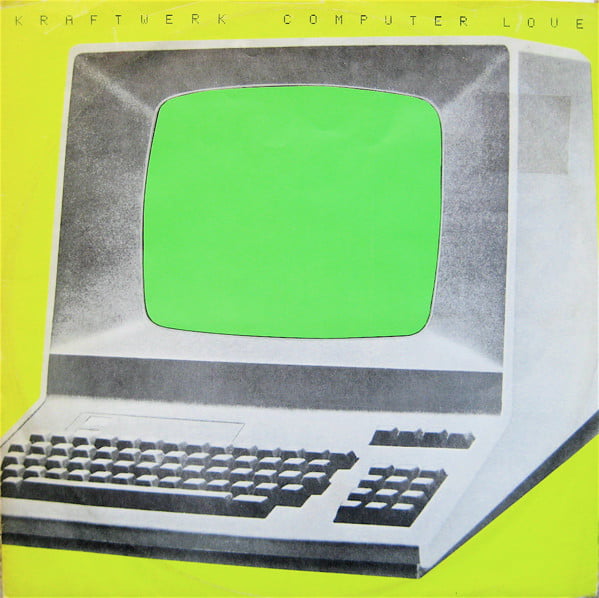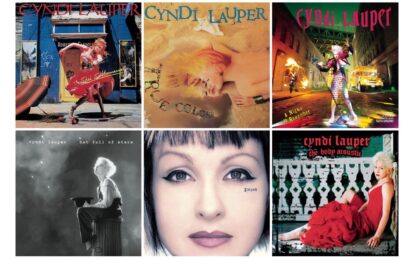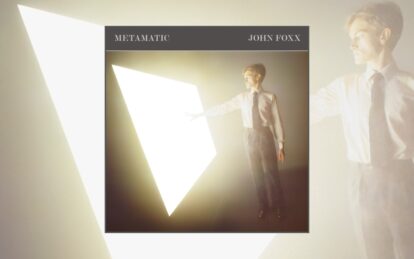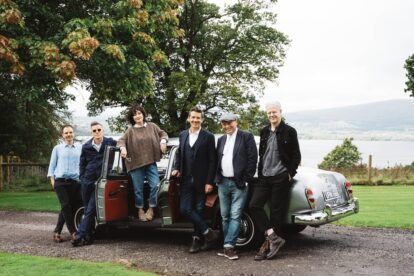
Top pop singles of 1981
1981 was one of the great years for pop singles. Here, we look at the best of the best from that vintage year…
Re-living such a mind-blowing year for pop music may have been by far the most fun we’ve had since lockdowns began, but it quickly made us aware that any attempt to try and play off the creativity that bubbled up throughout such a fertile 365-day period would be foolhardy. So, fair’s fair – instead, we decided to play DJ and curate a playlist of 40 of our favourite tracks released during the year.
Of course, that meant plenty of synth-pop and new wave, New Romantic flamboyance and mainstream pop, but it goes far beyond that. If we were to paint a genuine picture of 1981 – a year excited by brand new technology and budding genres, while simultaneously crushed by unemployment, recession and, eventually, rioting – there was much more listening to do.
With this issue’s selection, we tuned in to the times via both the airwaves and the underground. While our intention is to highlight the panorama of excellence that was on show that year, it also meant mining deep below the charts – and that meant plenty of arguments that Zoom-ed on into the early hours.
As always, rules needed to be put in place. Firstly, due to a catalogue of now-classic albums, we restricted ourselves to one track per band, so as to avoid certain super-productive groups hogging all the limelight. Next, any single released that year was up for consideration, even if it arose from an album that had been released the previous year [controversial, it’s true, but entirely put in place so that Once In A Lifetime made the cut – Ed].
So whether blaring out of the windows of Ford Cortinas, ghettoblasted from bedrooms, or shaking everyone’s ribs in clubland, these are the sounds of the people in 1981, up and down the UK.
Read more: Top pop songs of 1982
40 Controversy – Prince
Prince’s potent rhetoric in the title track of his fourth album – “Was I what you wanted me to be?” – reflected, and deflected, the scrutiny that fame had brought with it –(and the racism he’d experienced on tour with the Stones). Musically, he stuck to a typically spacious arrangement and racy funked-up synths. Combining the entire Lord’s Prayer with a borderless vision – “People call me rude/ I wish we all were nude/ I wish there was no black and white/ I wish there were no rules” – demands a revolution of the mind, and we can’t argue with that.
Read more: Top 10 Prince songs
39 Just Like Gold – Aztec Camera
Up in Glasgow, stoic indie Postcard Records was facing off against the big boys, forging its alchemy on a shoestring under the stewardship of founder Alan Horne. All of them – Edwyn Collins fronting Orange Juice, Paul Haig with Josef K, Roddy Frame’s Aztec Camera – were gifted insubordinates, but at just 16, Frame handled the slippery subject of love like no other, revealing a clear-sightedness beyond his years that’s illustrated beautifully in Just Like Gold. A version of its magnificent B-side We Could Send Letters featured on NME’s C81, too.
38 Doors Of Your Heart – The Beat
Two-tone had its day when The Beat’s punk-meets-rocksteady set I Just Can’t Stop It made No.3 in 1980’s album charts. By the time of 1981’s Wha’ppen? they’d tuned in to a mellower, more sophisticated Afrobeat sound. While much of the album – released amidst the UK riots – remained politicised, Doors Of Your Heart aired its message of unity over blissful summery pop – “No more defence, no more pretence”. Wha’ppen? made No. 4 in NME’s albums of the year, beating The Human League and Heaven 17. Bursting with positive vibes.
37 Der Mussolini – D.A.F.
Far and away the most fomenting act in this listing, D.A.F. made blood-tinglingly brutish dance music, reduced to its corporal elements: sweaty, licentious and savage, with the blackest of black wit spilling out over beats both electronic and organic, a Korg MS-20 synth at its heart. Scaling down from five-piece to duo for 1981’s Alles Ist Gut only intensified their sound, Gabi Delgado-López and Robert Görl distilling their essence into a song that embodied their anti- “Anglo-American pop imperialism” policy.
36 Pull Up To The Bumper – Grace Jones
The “high priestess of the outré” (thank you, New York Times) Grace Jones was gender neutral well before it was à la mode: “The future is no sex,” she told Interview in 1984. She was at the vanguard of music, too, a master of fusion aided by her two-and-a-half octave vocal range. With its deeply sexualised lyrics plus Sly and Robbie’s impeccable rhythm, Pull Up To The Bumper’s slick coalescence of disco, reggae and funk – and just a sniff of new wave – made the song as commanding as Grace herself.
Read more: Grace Jones – album by album
35 It Must Be Love – Madness
Labi Siffre’s lightfooted original made the Top 20 back in 1971, but when Camden’s Nutty Boys rebooted it with their ska-pop sound, they made It Must Be Love their own. At first it was just a pleasant uplift to encore their live shows, but the band were cajoled into recording it after Stiff boss Dave Robinson wagered the entire label to them if it didn’t make the Top 5. Thank Cupid they did: with help from producers Clive Langer and Alan Winstanley plus a plucky string arrangement, Robinson won the bet. Siffre liked it so much, he appeared in the video.
Read more: Making Madness’ Rise & Fall
34 Sat In Your Lap – Kate Bush
Kate Bush’s brand of eccentricity was concentrated in her sole ’81 single, with the singer taking (almost) complete control of new project The Dreaming. Sat In Your Lap arrived a full 15 months before, an esoteric mix of swishing bamboo, frantic tribal rhythms and Fairlight brass, with Bush’s vocal ranging from a girlish whisper to outright screams. Engineered by Nick Launay, fresh from recording PiL, it was a single of capricious genius, with its video – jesters, dunce caps, roller skates – helping make it one of the year’s most curious success stories.
Read more: Top 40 Kate Bush songs
33 Vienna – Ultravox
“We weren’t trying to create a hit song, just an interesting piece of music,” Midge Ure told The Guardian. Vienna was written while the band were penniless, having lost their deal. Helmed by kosmische legend Conny Plank, the band envisioned music for a non-existent movie, with Billy Currie keen to put his classical training to use. Intended as “a love song to an imaginary girl”, Vienna almost didn’t get single release: after all, its slow CR-78 rhythm, violin solo and long running time hardly screamed hit.
Read more: Ultravox – the complete guide
32 Cue – Yellow Magic Orchestra
As well as 1000 Knives, a refit of Ryuichi Sakamoto’s trailblazing ’78 solo single, the techno-pop trio’s BGM album included this poppy – well, for them – piece of electronic exotica. Their ethos of adopting new tech to take Japanese music to the world came via Roland’s Microcomposer and the first recorded use of the TR-808 sequencer. With Sakamoto absent, Cue was assembled by Hosono and Takahashi, with lyrics written by English-born manager, broadcaster – and brief musical collaborator – Peter Barakan.
31 Love Song – Simple Minds
At previous producer John Leckie’s suggestion that he move away from abstract imagery and write a classic love song, Jim Kerr chose the UK’s cross-Atlantic love affair as source material: “America’s a boyfriend”, he intones over its pulsing groove. Its crude demo transformed into a sleekly contoured finished product, Love Song marked a shift towards a more synth-based sound that would prove more commercially viable. Soon a live fave, the second single from Sons And Fascination made UK No.47.
30 Once in A Lifetime – Talking Heads
Is anyone on Planet Earth not rightly a fan of this song? Accounts of its making credit African pop – Fela Kuti, King Sunny Adé – as inspiration for the looping jam first heard on instrumental Right Start. Then it was rebuilt, co-creator Brian Eno’s reggae-ish reading clashing with the band’s funk grooves, with David Byrne, a pixelated preacherman, relaying disjointed images of the everyday, caught in thrilling limbo between melody and sermon. Remain In Light arrived in 1980 but this ’81 single is, quite possibly, the greatest thing ever created.
Read more: The Lowdown – Talking Heads
29 W.O.R.K (N.O. Nah No! No! My Daddy Don’t) – Bow Wow Wow
Coaxed by Malcolm McLaren to leave Adam to it, the original Ants formed Bow Wow Wow with schoolgirl Annabella Lwin, recruited from a launderette, and their excitable piracy-promoting debut C·30 C·60 C·90 Go (the world’s first cassette single) immediately found the Top 40. The group’s slap-bass heavy second, W.O.R.K, was a headlong clash of King’s Road style, African beats and stray charm, yet it only made No.62. Only with 1982’s Go Wild In The Country would they grab their first Top 10 hit.
Read more: Annabella Lwin interview
28 White Car In Germany – The Associates
Billy Mackenzie and Alan Rankine got noticed via an unsanctioned cover of Boys Keep Swinging, released as Bowie’s original was still on the airwaves. The move won them a major deal for their debut album before the more experimental Fourth Drawer Down hit the shelves; inspired by herbal highs, it drew together a run of irreverent, mind-addling singles. Clearly influenced by the hip Teutonic electronica issuing from the continent, White Car In Germany was cinema-ready and impeccably icy.
27 Homosapien – Pete Shelley
It wasn’t easy being gay in 1981, and Pete Shelley felt his first solo single was an opportune moment to deliver his not-so-subtle feelings on the matter for all the bigots to unwittingly dance to on a Friday night. A BBC ban for “explicit reference to gay sex” (they were wrong) scuttled all hopes of chart glory, but it defiantly blazed up the Billboard dance charts. It came with an equally subversive video, full of cryptic imagery – from Anubis, Egyptian god of the afterlife, to a Wildian carnation in Pete’s top pocket.
26 Bostich – Yello
Released as the final single from their debut LP Solid Pleasure, the Swiss odd-bods cartoonish yet boundary-pushing 1981 single is a Classic Pop mainstay. Dieter Meier, Boris Blank and Carlos Peron began making music in the late 70s, but with this bombardment of ordered absurdity people beyond their home country started tuning in. Hip New York clubs picked up on Bostich first, helping the song get to No.23 on the Billboard dance charts. By the mid-80s, single and soundtrack success would follow.
25 Happy Birthday – Altered Images
The fact that our 1981 playlist can go from D.A.F. to this wide-eyed expression of adolescence is testament to the year’s bonkers diversity. Altered Images sent a demo to Siouxsie and the Banshees and bagged both a support slot and bassist Steve Severin as album producer (though not for this track – that was Martin Rushent). The band were signed during Clare Grogan’s stint filming Gregory’s Girl. Happy Birthday became a UK No.2 hit, and the band won NME’s Best New Group and Most Promising New Act in Smash Hits’ 1981 readers poll.
Read more: Clare Grogan interview
24 Tears Are Not Enough – ABC
The inspirations for ABC’s luxuriant Lexicon Of Love LP? John Barry, Chic, Earth Wind & Fire… but also Cole Porter, Joy Division and the Cure. The debut single was a different animal, lumped in with the era’s wave of funk. Recording it had been, Mark White told Electricity Club, a “baptism of fire”, encompassing a concept of “scratchy guitar and brass”. Martin Fry’s elated falsetto helped carry the band from the dole queue to Top Of The Pops, but with the arrival for the album of Trevor Horn and Anne Dudley, a grander sophisti-pop would later emerge.
Read more: Making ABC’s The Lexicon Of Love
23 Reward – The Teardrop Explodes
From the minute he heard Alan Gill’s bassline, Julian Cope’s vision for Reward was for a Northern Soul stomper, “hectic and frenetic”, with trumpets in the manner of Love’s classic Forever Changes. After enlisting Bill Drummond (later of KLF) and plenty of hallucinogenics, the required atmosphere was achieved. It charted at No.6, but the band had disintegrated pre-Top Of The Pops. “It’s a mad awesome record unlike anything else in pop,” keyboardist David Balfe told The Guardian. “We sounded like Vikings on acid fronted by a lunatic…”
22 Europe After The Rain – John Foxx
Was the man who once wanted to be a machine finally softening? Released in August, this satellite from The Garden album opened up a warmer direction for Foxx, directly influenced by his work alongside film director Michelangelo Antonioni on the soundtrack for Italo-drama Identification Of A Woman. While the new LinnDrum provided rhythm, a richer, more traditional palette – including piano and an acoustic guitar that he strummed on TOTP – helped Foxx sneak into the UK Top 40.
Read more: John Foxx interview
21 Through Being Cool – Devo
A track that’s overlooked, from a band who often suffer the same fate, this wonky missive from avant-pop group Devo’s New Traditionalists LP is as majestic a piece of pop as any in its class. Its the anthem for the geeks, nerds and misfits of the world: “If you live in a small town/ You might meet a dozen or two/ Young alien types who step out/ And dare to declare/ We’re through being cool!” No chart action whatsoever, but happily its fantastic, laser-happy video meant plenty of MTV attention all the same.
20 Tainted Love – Soft Cell
Non-Stop Erotic Cabaret may well have remained an arthouse name-drop were it not for Soft Cell’s synth re-working of Gloria Jones’ 1964 B-side Tainted Love, a Northern Soul classic. Almond fell for it while working the cloakroom at a club in Leeds in search of an encore song. “When we started on our own version, it felt twisted and strange,” remembered Dave Ball. “That suited us. We were a weird couple.” With Marc’s vocal slant added in one single take in the studio, it would become the biggest-selling single of the year and a No.1 in 17 countries.
Read more: Soft Cell interview
19 Rapture – Blondie
It might seem odd now to think that the first hip hop single to top the US charts was sung by Debbie Harry, but though The Sugarhill Gang had surfaced with Rapper’s Delight in ’79, the genre was still firmly underground. Having hung out in the Bronx, Blondie had New York’s hip hop coterie behind them, with this track even providing some later linchpins of the scene – including Wu-Tang Clan – with a window onto the music. Grandmaster Flash’s game-changing Sugar Hill hit, Adventures On The Wheels Of Steel, would soon follow, featuring Rapture.
Read more: Top 40 Blondie songs
18 Wordy Rappinghood – Tom Tom Club
Deserving of its own genre entirely, this giddy celebration of words begins, fittingly, with a clattering typewriter before that familiar wobbly synth stab heralds a freestyle mix of pop, rap and funk. Talking Heads’ husband-and-wife rhythm section Chris Frantz and Tina Weymouth were the culprits, cutting this cult favourite at Compass Point studios with studio All Star guitarist Monte Brown and ‘Riddem Twins’ Sly and Robbie on handclaps. No novelty, this was cutting-edge. Grace Jones, incidentally, was next door, recording Nightclubbing.
17 Primary – The Cure
Taut, claustrophobic moods and rumbling locomotive riffs had become The Cure’s calling card, and here they were summoned from not one but two bass guitars, with Robert Smith and Simon Gallup crossing swords in skittish union. Primary revealed a band heading for darker areas; with third album Faith and later with October’s standalone Charlotte Sometimes, the 21-year old singer’s writing was advancing apace. Best consumed via the rare 12” version – or, for an earlier take, try the 1981 Peel session.
Read more: Making The Cure’s Disintegration
16 Chant No. 1 (I Don’t Need This Pressure On) – Spandau Ballet
At the height of summer ‘81, Blitz days behind them, Spandau secured a second jubilant Top 5 with the first showing from new LP Diamond. Many expected dandies on synths but Kemp and the band instead opted to post this blue-eyed soul-funk work-out, all the better for bongos, with brass from Britfunk trio Beggar & Co. Inspiration came from New York clubland and Was (Not Was), while a hip Soho video and a remix from Richard James Burgess did the rounds.
15 Visions Of China – Japan
Japan’s last hurrah, Tin Drum, is hailed as the apex of their endeavours: experimental and absorbing, alien and distant, exotic and literate. David Sylvian’s collaboration with YMO’s master programmer Ryuichi Sakamoto the previous year had further piqued his interest in orientalism, and it’s woven deep into these textures. For Duran the make-up was for the flashbulbs, but for Sylvian it was a wall dividing him from the world: “There’s a period going past at the moment that may make us look as though we’re in fashion,” he told Smash Hits.
Read more: The Lowdown – David Sylvian and Japan
14 New Life – Depeche Mode
Photographic featured on the legendary Some Bizzare compilation, helping to give the majors a scare from the underground, and single Dreaming Of Me – and its equally promising flipside, Ice Machine – had provided Mute’s synth-hopefuls a sneak peek of chart action. The second attempt New Life was a giant step up, triggering a seemingly unstoppable flow of Top 20s that – bar Love, In Itself – lasted well into the middle of the decade. Several impressively assured Top Of The Pops performances brought a No.11 hit, and the ‘Mode were well and truly on course.
Read more: Top 40 Depeche Mode songs
13 Souvenir – OMD
Written by keyboardists Paul Humphreys and Martin Cooper and – unusually – also sung by Paul, this synth-pop opus arose from a day spent looping a choir onto a tape machine. The result: a celestial palette on which the band could build their new single, complete with one of the finest hooks of the decade. Bright and buoyant, soporific and compelling even without a chorus, this is very much a pop song. Another composition dedicated to Ian Curtis, this reached No.3, OMD’s highest UK placing.
Read more: OMD interview
12 Einstein A Go-Go – Landscape
As well as co-inventing a cool hexagonal drum synth (demoed on Tomorrow’s World) and producing Spandau’s debut album, tech-venturer Richard James Burgess also made some of the 80s’ weirdest and most wonderful synth-pop with electro-radicals Landscape, as heard on their From The Tea-Rooms Of Mars To The Hell-Holes Of Uranus LP. Einstein A Go-Go is cartoon satire, sampling prank calls made to the White House and the Kremlin and smuggling an anti-nuclear message into the charts.
11 Ghost Town – The Specials
The Specials’ transcendental 45 captured not only the bitterness and frustration awakened by a grim panorama of shuttered-up shops, broken spirits and a crushing recession but also the fractured tensions of a band imploding. Its hollow flute hangs in the air as weary brass stabs and a haunted Hammond play on; detached vocal wails scratch at the door as police sirens bring it to a close. Single of the Year in Melody Maker, Sounds and NME, the spectre of the track haunts long after it’s over.
10 Love Action (I Believe In Love) – The Human League
The figure of Phil Oakey posing with half-shorn hairdo, flanked by Susanne Sulley and Joanne Catherall, two kohl-eyed kids straight out of school, made for a striking and very British image; everyday street smarts that were bound to relate. With Martin Rushent’s sequencing skills, a Linn and a Roland System 700, THL Mk.2 won big with Dare’s second single, their first Top 10 in the summer of ‘81. Labelled RED for DANCE, its unmistakable shuddering hook blared out over guitar-triggered modular synths as its autobiographical tales were spun out.
Read more: Top Human League songs
9 Girls On Film – Duran Duran
Duran’s first transmission, the New Romantic-referencing Planet Earth, arrived from Birmingham with love and initiated a super-styled mission that would bring them überfame at hyperspeed. After the brief misfire of Careless Memories, those stadium-filling ambitions were vindicated with Girls On Film, fuelled on punk, funk, glam and disco and with a sizeable nod to David Sylvian’s Japan. Based on an old tune from a previous incarnation and powered by a Sylvester-inspired bassline, it’s best heard on the lengthier Night Version.
Read more: Top 40 Duran Duran songs
8 (We Don’t Need This) Fascist Groove Thang – Heaven 17
The guts of Heaven 17’s kitchen-sink debut were repurposed from a previous creation called Groove Thang, recorded for Martyn Ware and Glenn Gregory’s BEF album Music For Stowaways. Streamlined for the pop arena, its lyrics remained subversive, referencing the recently elected US president (“Reagan’s president elect/ Fascist god in motion”) and leading to a ban from Auntie. Despite barely any airplay, the song still nabbed a UK No.45.
7 O Superman – Laurie Anderson
Wedged incongruously between The Birdie Song and Dave Stewart and Barbara Gaskin’s It’s My Party in October’s hit parade, O Superman is certainly unique: playful, sinister, and nine minutes long, with mesmeric ‘ha-ha-ha’s’ and a collage of vocodered poetry. Its creator, avant garde artist Laurie Anderson, hung out with NYC’s arthouse elite including David Byrne and Phillip Glass. Much like Ann Steel’s kooky ’79 LP, Anderson’s incomparable Big Science album is a must-have for your collection.
6 Ceremonym – New Order
New Order’s three opening singles were all of an unfairly high standard, but it’s their debut that sticks in the mind – perhaps because it was around when Ian Curtis was, his presence still looming large. Nonetheless, it gracefully bridged the gap, giving leave for the new incarnation. Recorded and issued twice as New Order, in January and September, Gillian Gilbert completed the restoration on guitar for the latter release, while Peter Saville provided its stamped gold-bronze sleeve.
Read more: New Order – Album By Album
5 Stand And Deliver – Adam and The Ants
When the original Ants scattered to form Bow Wow Wow, Adam, cast as dandy brigand, was left to round up new comrades to the sound of the Burundi beat. His pirate-pop vision of Englishness sparked a shortlived takeover, and Antmania went wild. After Antmusic, a superb No.2 to the memorial re-release of John Lennon’s Imagine, Stand And Deliver pinched the summit. Born of punk beginnings but peacocking teen-idol in its delivery, its five-week stay at the top spoke volumes. Absolutely one of the songs of the year – and not just for the Antpeople.
Read more: Top 20 Adam Ant songs
4 Favourite Shirts (Boy Meets Girl) – Haircut 100
A boyish take on the snowballing New Funk wave, this playfully-arranged groove with its boy-meets-girl vocal logo wasn’t afraid to shove in a bombastic brass hook or two; that, and a full-on sax solo, followed by a trumpet solo, followed by a bongo solo… oh, and a bit of rap. It’s a record intended to have a bloody good time to, and many did, hence its Top 5 UK placing. Everything took off for Haircut 100 the following year when the album Pelican West brought more of the same.
Read more: Nick Heyward – Album By Album
3 Kids In America – Kim Wilde
Kim Wilde’s modish new wave debut, authored by brother Ricky with lyrics by famous rock’n’rolling father Marty, sold so fast – 60,000 copies a day – that she was accused of cheating. Propulsive, hip, and so charged with energy it almost exuded sparks, Wilde’s three minutes of glossy, candy-cool pop went hurtling chartward, teeming with hooks. Landing at No.2 in the UK, its rise scuppered by a double-denimed Shakin’ Stevens, it crowded European dancefloors and beyond – plus, the actual kids in America liked it, making it a US No.25.
2 The “Sweetest Girl” – Scritti Politti
Full metamorphosis for most bands happens subtly and over time, but when Green Gartside decided to leave his former noisy politico self behind for the hissing hi-hats of an 808 and a more cultured musical vision, it was an abrupt about-face. It was also a great day for pop; by 1985 we had Cupid & Psyche 85 and its sophisticated, candied centrepiece The Word Girl. Chosen to open NME’s legendary C81 compilation, The “Sweetest Girl” didn’t trouble the charts but has since risen to acclaim.
Read more: Green Gartside interview
1 Computer Love – Kraftwerk
While all around them others exploited their once-alien sound, sweetened kosmische motifs rebounding from all the corners of the scene that mattered, eight albums in, Düsseldorf’s finest were only just gaining commercial impetus. Their English language refresh of Das Model, re-released as a double-A with Computer Love, was a UK No.1. Yet more pilfering came in 2005, when Coldplay were granted permission to nick the melody for their single Talk, after a grovelling letter from Chris Martin.
Read more: Making Kraftwerk’s Autobahn
Read more: Top 40 synth-pop songs
Classic Pop may earn commission from the links on this page, but we only feature products we think you will enjoy.






